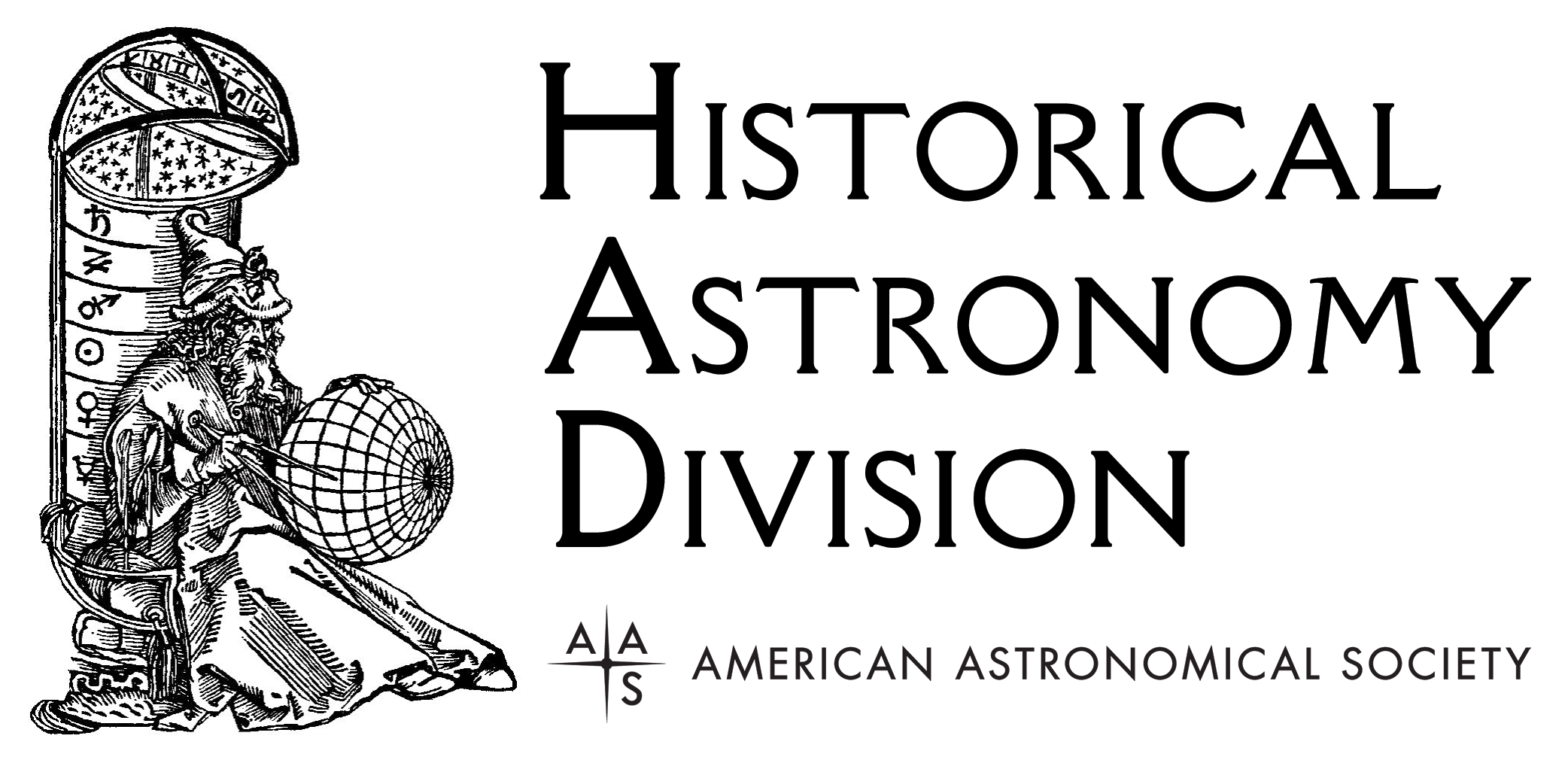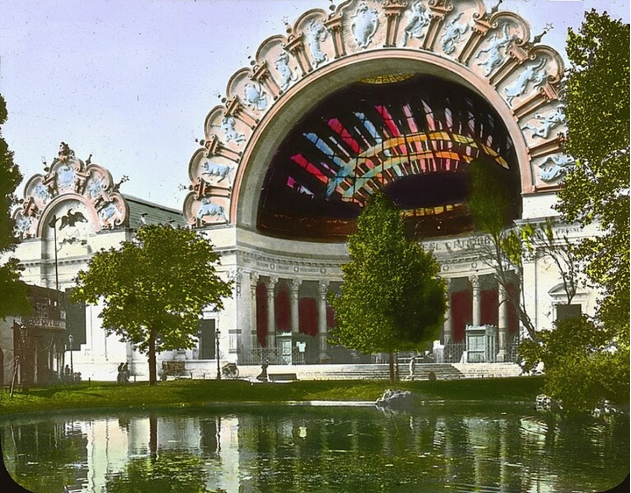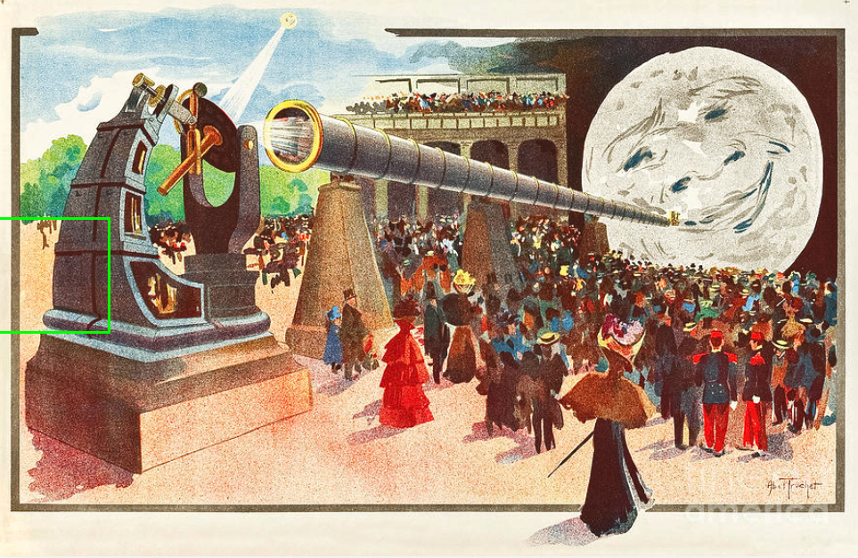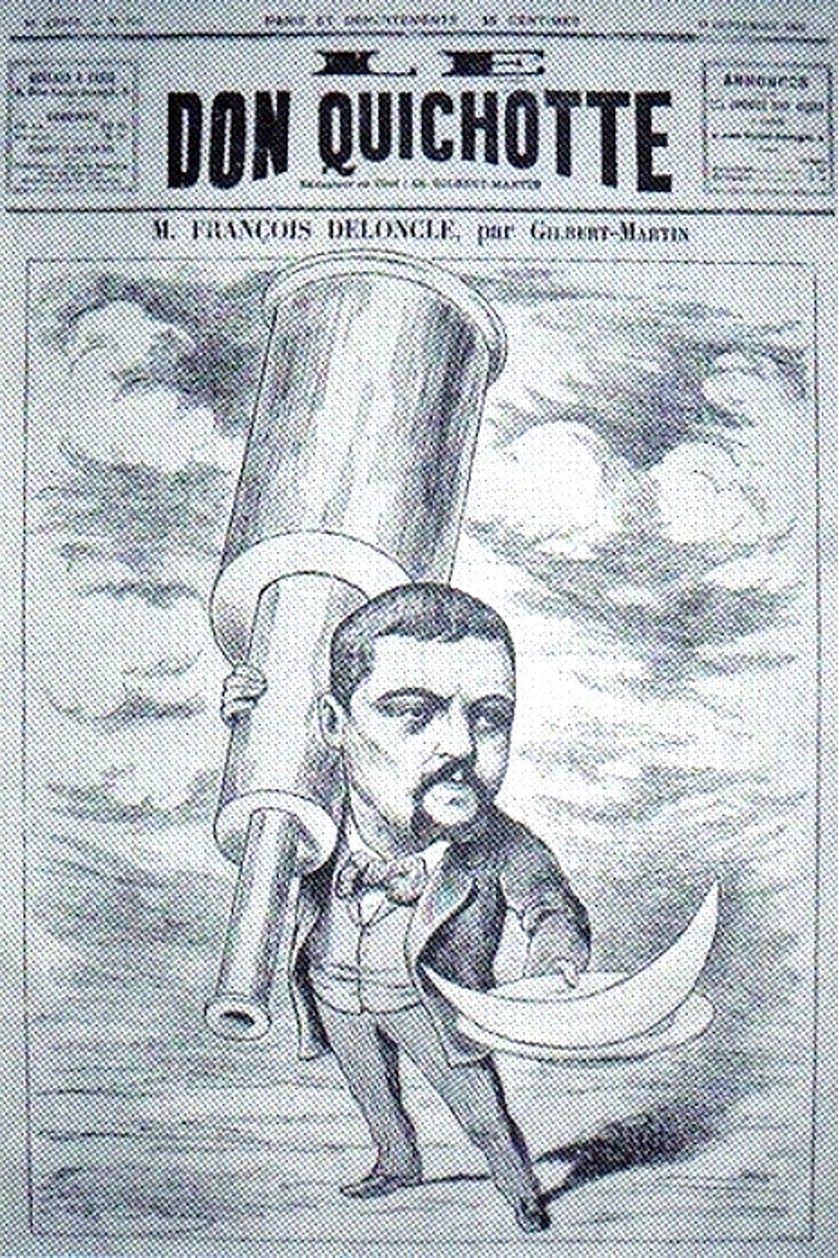This Month in Astronomical History: May 2024
Kenneth Rumstay Valdosta State University (Emeritus)
 Each month as part of this series from the AAS Historical Astronomy Division (HAD), an important discovery or memorable event in the history of astronomy will be highlighted. This month, Kenneth S. Rumstay writes about the giant refractor at the Exposition Universelle of 1900. Interested in writing a short (500-word) column? Instructions along with previous history columns are available on the HAD web page.
Each month as part of this series from the AAS Historical Astronomy Division (HAD), an important discovery or memorable event in the history of astronomy will be highlighted. This month, Kenneth S. Rumstay writes about the giant refractor at the Exposition Universelle of 1900. Interested in writing a short (500-word) column? Instructions along with previous history columns are available on the HAD web page.
The Great Paris Exposition of 1900
Part Two: La Grande Lunette
The Paris Exposition Universelle of 1900 hosted over 48 million visitors. Its modern wonders included a giant Ferris wheel, escalators, moving sidewalks, a talking cinema, and Le Grand Globe Céleste — 45 meters in diameter on a base of about eighteen meters in height with an interior restaurant, garden, and planetarium. Visitors approached Le Grand Globe Céleste through Le Palais de l’Optique (Palace of Optics, Figure 1), which included a giant kaleidoscope, dancers performing in phosphorescent costumes, and demonstrations of the recently discovered x-rays. Amid all the splendors, the most popular by far in the Palace of Optics — and perhaps the most popular attraction at the Exposition — was La Grande Lunette (Figure 2), at 125 cm outside diameter. This was and would remain one of the largest refracting telescopes ever built.1
In 1892 François Deloncle (1856–1922), a member of the French Chambre des Députés, suggested that an astronomical telescope should be the centerpiece of the Exposition planned to commemorate the new century. He was apparently inspired by a visit to the Paris Observatory, where he was enthralled by photographs of the lunar surface made by its Director Maurice Lœwy. Deloncle recounted his conversation in a 1900 article in Strand Magazine.2
"With an instrument of double the power of this you could, no doubt, obtain even better results?" I said to M. Lœwy.
"Certainly." Was the answer.
"And if the telescope were three or four or six times as powerful, better still, no doubt?"
"Naturally; but such an instrument is not likely to be forthcoming for a long time."
At that moment my resolution was taken.
"Why," I asked myself, as I left the Observatory, "should I not have a telescope made for the Exhibition on a larger scale than has ever yet been attempted? — a telescope that would bring the celestial bodies almost to our doors? What could possibly be more celebrated than such an instrument to enlarge the horizon of human understanding?"
The proposed project immediately captured the public’s imagination, and La Lune à un mètre became the catchphrase of the day (Figure 3). Astronomers however were less than enthusiastic, proclaiming the fashioning of a lens of the proposed diameter to be impossible, and Mssr. Deloncle was subjected to ridicule (Figure 4).
Nonetheless, the Exposition’s organizers approved the project. Deloncle and a team of financial backers formed a company — La Sociétė d’Optique — which sold stock to fund the endeavor. The project would cost an estimated 1.4 million francs, equivalent to more than US $8 million today. And how to house such a tremendous instrument? A traditional dome would have been prohibitively expensive. Moreover, the structures for the fair were intended to be temporary and to be demolished once it was over. The solution adopted was to use a siderostat, a movable flat mirror, invented in 1862 by Léon Foucault, to direct light into a fixed horizontal telescope (Figures 5 and 6).
The 1.25-meter (49.2-inch) achromatic objective lens, optimized for photographic observation, had a focal length of 57 meters (187 feet). A second objective lens, optimized for visual observation, was planned but not completed in time for the fair’s opening; it was placed on display. The lowest magnification of 500X provided a field of view only three arcminutes across, and magnifications of up to 6000X were reportedly used. With the latter visitors would have seen the Moon as if it were just 60 kilometers away. While visual observations could be made at the eyepiece, images of bright objects such as the Moon or planets (Mars and Venus graced the western sky on the fair’s opening) could be projected onto a large screen in the viewing theatre. The telescope's eyepiece and viewing plate were mounted on rails that could be shifted up to 1.5 meters for focusing.3
After midnight, Eugène Antoniadi, Charles P. Butler, Charles Le Morvan (Figure 7), and other astronomers used the telescope for astronomical observation. Nonetheless, only slight useful research came from the world’s largest refractor. The main culprit was light pollution: Paris is the “City of Lights.” And no provision for ventilation within the 200-foot steel tube was made. So images would have been degraded by slight variations in air temperature along the light path. It remains that the consensus, then and now, is that optically the telescope was quite good, and could have proven an important instrument for astronomical research in a suitable location. Alas, that was not to be.
Although the 1900 Paris Exposition attracted about 50 million visitors, many of whom must have paid for admission to the telescope, ticket sales failed to recover La Sociétė d’Optique’s investment. It was put up for sale, but there were no takers: the cost of relocating the giant instrument to a prime observing site would have been “astronomical” and there was still widespread skepticism about its fundamental design. In 1909 La Sociétė d’Optique declared bankruptcy, and the steel tube and mechanical parts were sold as scrap metal. The siderostat was placed on display at the Paris Observatory. The fate of the two objective lenses was unknown to astronomers until 2002 when they were discovered (in wooden packing crates) in the observatory’s basement.
While Jeff Hecht’s history of the la Grande Lunette in Sky & Telescope is favorable, other opinions were not.3 The Great Paris Telescope was Joseph Ashbrook’s Astronomical Scrapbook contribution in the August 1958 issue of Sky & Telescope.4 In the 1984 anthology of Ashbrook’s columns, this article (somewhat edited) was retitled The Great Paris Telescope Fiasco.5 The best encapsulation may be that Mssr. Deloncle’s goal was to create a grand astronomical spectacle for all to enjoy at the 1900 Exposition, and he certainly succeeded.

Fig. 1: Entrance to Le Palais de l'Optique at the 1900 Paris Exposition. To its left is the entrance to the Restaurant du Lac. (image courtesy of the Brooklyn Museum)6

Fig. 2: Contemporary poster advertising La Grande Lunette. Designed by Georges Paul Leroux (1877 –1957), it shows a young woman symbolically bringing the Moon down to Earth. (Image courtesy of the Minneapolis Institute of Art).7

Fig. 3: “La Lune à un mètre”, a 1900 poster designed by Louis Abel-Truchet (1857–1918). Inspired by Georges Méliès' 1898 film of the same name, it shows (unrealistically) La Grande Lunette projecting the Moon’s image onto a screen. (Image courtesy of ParisCityArt)8

Fig. 4: An 1892 cartoon ridiculing François Deloncle and his “impossible” telescope project.9

Fig. 5: Drawings illustrating the overall plan of the telescope. At the top (1) is a side view of the entire instrument in its protective structure and, at right, the theatre where visitors watch the projected images. Below it are shown the siderostat (2), the objective lens (3), and the movable carriage with eyepiece for projecting the image. These drawings appeared in the 11 février 1899 issue of the French science magazine La Nature (pp. 167-170).10

Fig. 6: The 57-meter steel tube of the telescope in place, prior to the Exposition’s opening to the public on 14 April 1900.10

Fig. 7: Photograph of the Moon, taken 16 August 1900, with the Great Telescope. This, with two others, was included in the article “The First Moon-Photographs Taken with the Great Paris Telescope” published in the November 1900 issue of Strand Magazine.2
Notes & References
- Note that the absolute diameters and clear optical paths of the Yerkes refractor of 1897 and the Swedish solar telescope at La Palma now are also about 100 cm. Also, while the word “lunette” sounds like a cognate to English Luna, lunar, etc., in modern French (by analogy), lune, lunette etc., mean “eye glass(es)” exactly.
- Strand Magazine, vol. 19 (1900), pp. 612-18.(https://en.wikipedia.org/wiki/Great_Paris_Exhibition_Telescope_of_1900#…)
- Hecht, Jeff (2017). “The Lesson of the Great Paris Telescope”, Sky & Telescope 134. 28.
- Ashbrook, Joseph (1958). “The Great Paris Telescope”, Sky & Telescope XVII, 509.
- Ashbrook, Joseph (1984). The Astronomical Scrapbook: Skywatchers, Pioneers, and Seekers in Astronomy. Cambridge, MA: Sky Public=shing Corporation, p.179. 6.
- https://en.m.wikipedia.org/wiki/File:Paris_Exposition_Palace_of_Optics,… (Wikimedia Commons)
- https://collections.artsmia.org/art/110043/exposition-universelle-palai…
- https://www.pariscityart.com/shop/listing/la-lune-a-un-metre-mini-poste…
- Charles Gilbert-Martin, “Le décrocheur de lune”, Le Don Quichotte, 11 September 1892
- La Nature, 11 février 1899, pp. 167-170.

